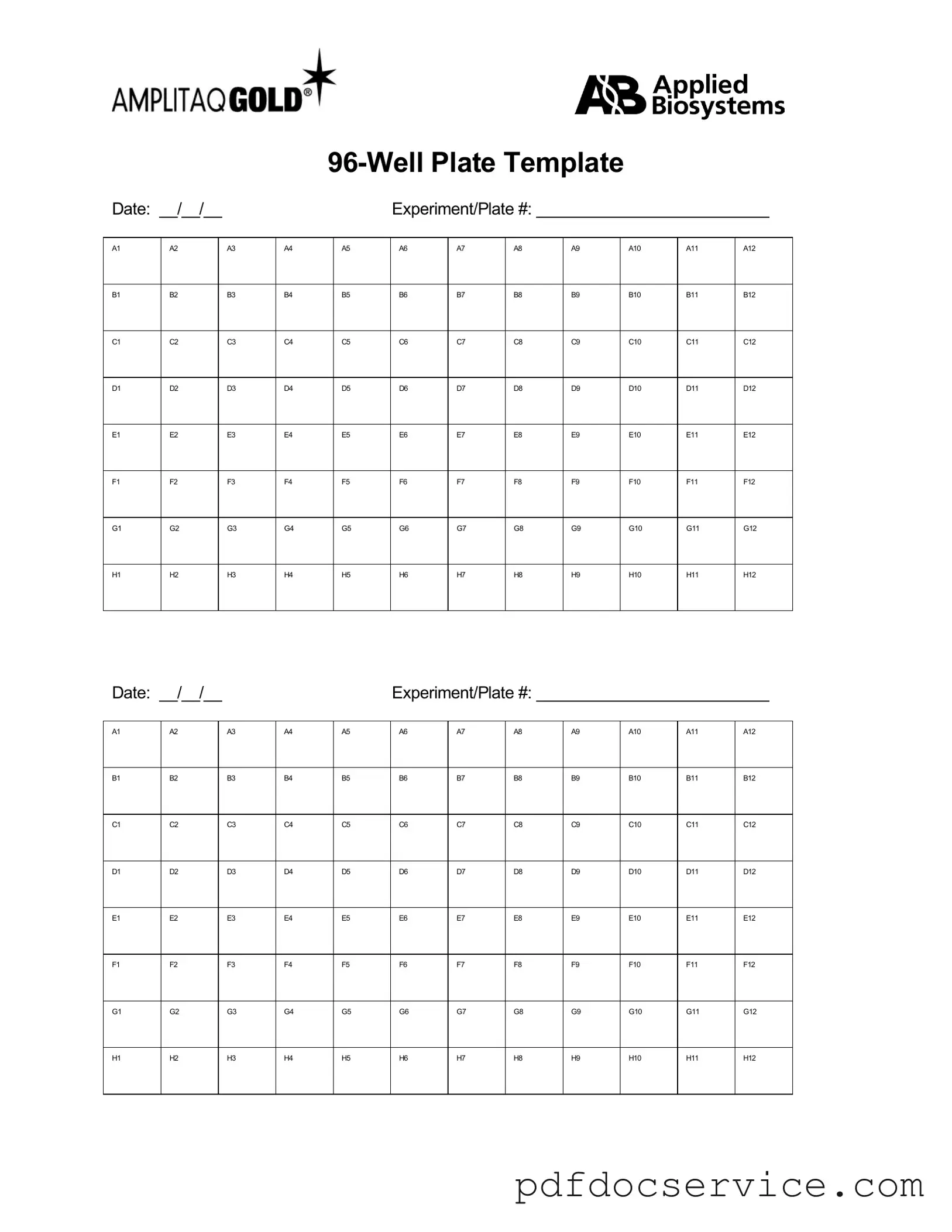The 96 Well form is an essential tool widely utilized in various fields, particularly in laboratory settings, for the organization and management of samples. This form typically consists of a grid layout featuring 96 individual wells, allowing for the simultaneous processing of multiple samples. Each well can be used to hold different substances, ranging from biological samples to chemical reagents, making it invaluable for experiments that require high-throughput analysis. The design of the form promotes efficiency, as researchers can easily track and manipulate samples without the risk of cross-contamination. Clear labeling and organized data entry are crucial components, ensuring that each sample is accurately identified and that results can be reliably interpreted. By streamlining workflows and enhancing data management, the 96 Well form serves as a backbone for many experimental protocols, facilitating advancements in research and development across various scientific disciplines.
